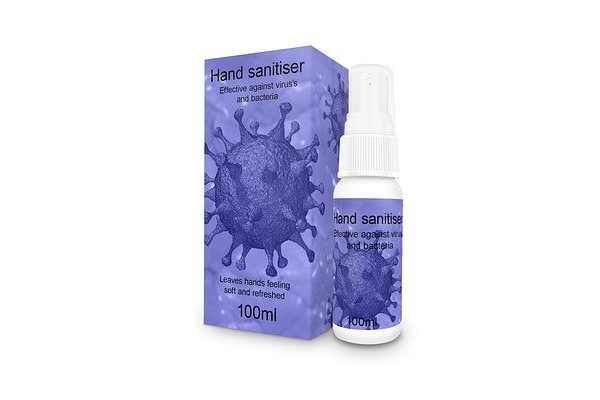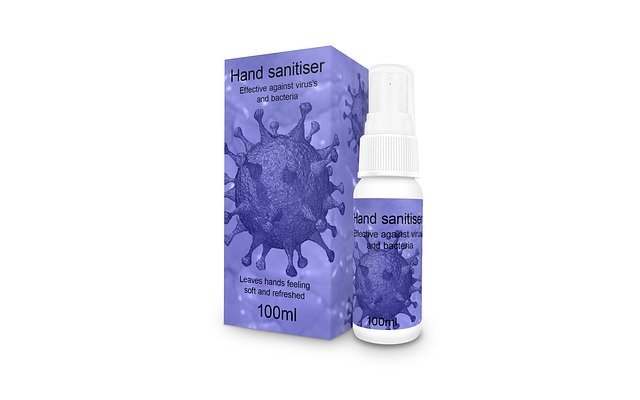Follow @solverworld Tweet this
With the current COVID-19 crisis, most retail and online stores have been unable to keep hand sanitizer in stock. This has created a crisis for people that need to clean their hands and are unable to access soap and water. The CDC recommends hand washing for 20 seconds frequently to avoid contamination 1. If this is not possible, they recommend using a hand sanitizer with at least 60% alcohol.
Because of the shortage of commercial hand sanitizer, recipes have been circulating on social media for a homemade or DIY (Do It Yourself) version. While there is rarely any scientific standing behind these recipes, there is also a long standing recipe published by the World Health Organization (WHO). Putting aside any possible problems people may have following these recipes precisely enough to make an effective hand sanitizer, I want to address one deadly consequence that could occur from faulty or improper manufacturing practices.
It is possible that someone attempting to make their own hand sanitizer in this crisis situation makes one simple, deadly, mistake. They use an alcohol containing a small amount of methanol.
First, some background. The alcohol that is used in what are commonly called alcoholic drinks is ethyl alcohol (sometimes called ethanol). It is taxed by the Federal government (in the US) at a rate of $13.50 per proof gallon 2. A proof gallon is 1 gallon at 100 proof, or 1.25 gallons of 80 proof, and so on.
Two other kinds of alcohol are isopropyl alcohol and methanol (methyl alcohol). Isopropyl alcohol is what people commonly buy as rubbing alcohol, with percentages of alcohol ranging from 70% to 95%. Methanol is sold for use as fuel in camping stoves (alcohol stoves) and as a thinner for various paints, such as shellac.
The problem with methanol is that it is deadly toxic to humans. It only takes 10 mL (about 1/3 of an ounce) to cause blindness in an adult, or 30mL to cause death 3. It is the impurity in moonshine (or any improperly distilled spirit) that can make it deadly.
The other property of methanol of note is that it is absorbed through the skin. In fact, it is absorbed at the rate of 2mg/cm2/hr [See update below]. That may not seem like much, except that the hand surface area is about 2% of your total body surface area, which amounts to roughly 1000 cm2 for two hands 4. It is left as an exercise for the reader to determine just how long you can rub methanol on your hands before suffering disastrous consequences, including neural toxicity, blindness, and death. Hint: not very long and not something anyone should try.
There is one more important fact before we come to the punch line. In order to sell ethyl alcohol for non-drinking purposes and avoid the payment of the excise tax, the Federal government allows it to be adulterated with certain substances that make it undrinkable. This alcohol is then called “denatured alcohol” and allowed to be sold without the payment of the excise tax, which would be $6.75 per quart of pure (100%) ethyl alcohol otherwise. What are these things added, called denaturants? It depends on the purpose of the alcohol, and there are whole set of recipes pre-approved by the Federal government, under CFR (code of Federal Regulations) Title 27 Part 21 5. For example, S.D.A (Specially Denatured Alcohol) 23-H is made by adding acetone and methyl isobutyl ketone (MIK). S.D.A. 30 is made by adding methanol (approximately 9%). I hope you can now see the problem – if someone makes hand sanitizer, and uses a denatured alcohol containing methanol, the most common type sold in hardware stores, either without knowing or without caring, that is going to have deadly consequences when people rub it on their hands.
California banned the sale of denatured alcohol last year.
In case you think this is just so ridiculous that it could not happen, I have bad news. There have been cases reported in the past 6. And with the current pressure on supplies of hand sanitizer and the reported price gouging by some retailers, it is bound to become more common.
The FDA has relaxed its rules on the production of hand sanitizer, allowing pharmacies and others to produce hand sanitizer in the current situation.
Please make sure you trust your supplier when you buy hand sanitizer. Anybody can print a label and put it on a bottle – that’s no guarantee of what’s inside.
Update 13 Feb 2022:
Thanks to the astute reader who pointed out my previously incorrect estimate of hand surface area. It has been corrected. I apologize.
Also, there are variations in absorption rates reported. Two references to 0.192 mg/cm^2/min are 7 and 8. The one I used (for 2.0 mg/cm^2/hr) was 9. Please note the different time units in the two estimates.
Also, there is a wide range in the reported amount of methanol that can cause blindness. This reference gives 3.16-11.85 g/person 10. I don’t look at that and say, I guess I will ingest 3.06g because it’s under the limit! So please be safe.
Notes:
- https://www.cdc.gov/coronavirus/2019-ncov/prepare/prevention.html ↩
- https://www.ttb.gov/tax-audit/tax-and-fee-rates ↩
- https://en.wikipedia.org/wiki/Methanol ↩
- J Physiol Anthropol. 2007 Jun;26(4):475-83. doi: 10.2114/jpa2.26.475. https://pubmed.ncbi.nlm.nih.gov/17704626/ ↩
- https://www.govinfo.gov/content/pkg/CFR-2019-title27-vol1/xml/CFR-2019-title27-vol1-part21.xml ↩
- https://www.researchgate.net/publication/326275500_Methanol_as_an_Unlisted_Ingredient_in_Supposedly_Alcohol-Based_Hand_Rub_Can_Pose_Serious_Health_Risk ↩
- J Avella, et al, J. Analytical Toxicology, Vol. 29, Oct 2005. ↩
- Int Arch Occup Environ Health 1980, 47(1):81-8 https://pubmed.ncbi.nlm.nih.gov/7429648/ ↩
- Ann Occup Environ Med 2017, 29:44 https://www.ncbi.nlm.nih.gov/pmc/articles/PMC5625597 ↩
- Ann Occup Environ Med 2017, 29:44 https://www.ncbi.nlm.nih.gov/pmc/articles/PMC5625597/ ↩





The problem with methanol is that it is deadly toxic to humans. But can it kill corona virus as ethanol or isopropyl alcohol.
Methanol does not occur from “improperly distilling” moonshine. That is a myth. It was intentionally added by unscrupulous profiteers.
And, of course, it was all caused by the incentives created by prohibition.
I’m not sure where your other numbers come from (I did check your references), but one of my fingers has more than 40 square centimeters of surface area. Two hands is more like 1,000 square centimeters. That absorption rate seems insanely high, and it would only take a few minutes to kill – but that is clearly not the case.
I misread my own numbers for absorption (!) and I researched the rate. I found 0.192mg/cm^2/min. So, using 1,000 cm^2 for hand area, you’ll absorb 0.192 g/min. You’d need to soak both hands in methanol for about 40 minutes to absorb 10 ml of methanol or two hours to absorb 30 ml.
I found your reference to .192 mg/cm^2/min. My original reference was 2.0mg/cm^2/hr, which is .033 mg/cm^2/min; you found 6 times the absorption rate. I will update my post with the new information. Thanks. Note that blindness numbers are not exact – one report was that 3.16 – 11.85 g of methonal could cause blindness. I personally don’t want to be absorbing anywhere near that amount.
Thank you (and I apologize for the delay in responding). I wasn’t prepared for the >2000 spam comments I was getting. I made a mistake on the hand area, not sure how.
Your estimate of 1000 cm^2 for two hands is a good one. I will update the post.